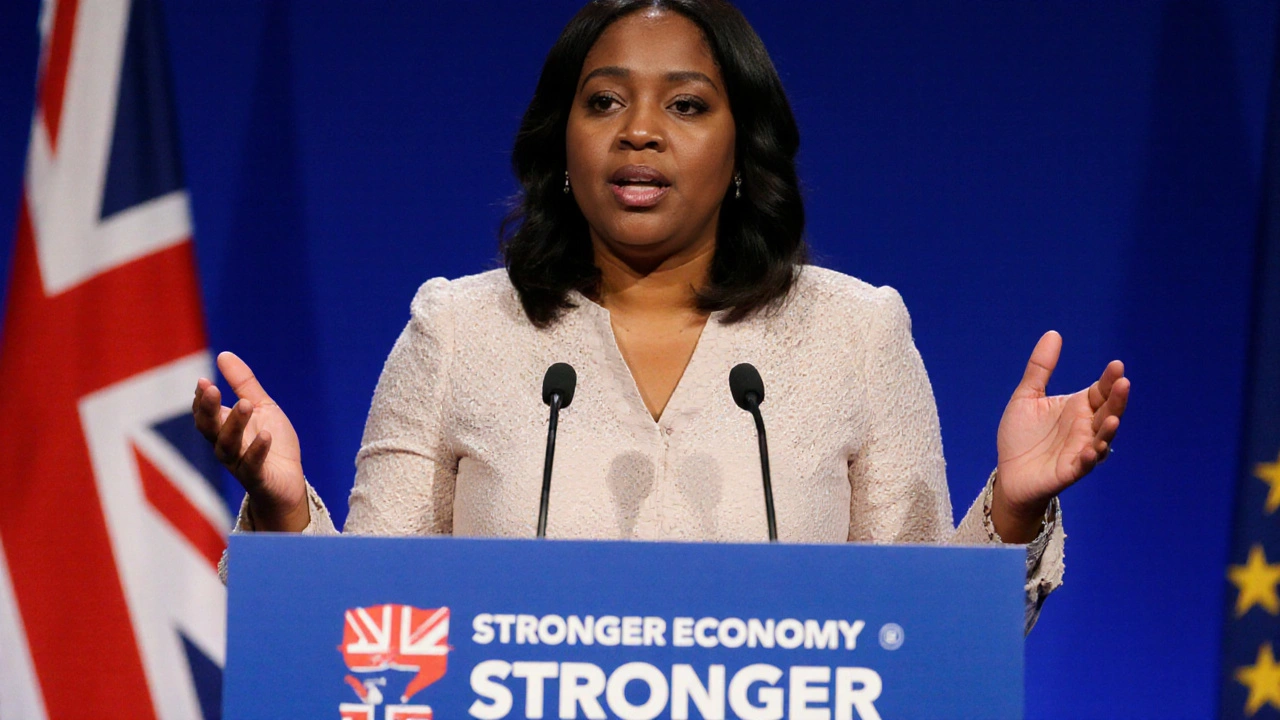When Kemi Badenoch, Leader of the Conservative Party Conservative Party stepped up to the podium at Conservative Party Conference 2025Manchester Central Convention Complex on October 8, 2025, she delivered a headline‑grabbing promise: England’s stamp duty on primary residences would be scrapped entirely if the Tories win the next general election. The pledge – a £9 billion tax giveaway according to Treasury estimates – was framed as the "big‑gest tax policy move" since the 2022 mini‑budget, and it instantly became the story of the three‑day gathering.
Historical backdrop: From thresholds to total abolition
Stamp duty has been a fixture of the UK property market since the early 2000s, with successive governments tweaking thresholds and rates to smooth the housing cycle. The last major Tory adjustment came in 2022, when the Sunak administration reduced the entry‑level brackets, a move credited with a short‑lived boost in transactions. Badenoch’s announcement, however, throws out the incremental approach in favour of a clean sweep – a step she called "necessary because adjusting thresholds simply wouldn't be enough".
- Current stamp duty in England starts at 5% for homes over £250,000.
- The Treasury projects a £9 billion loss in revenue in the first year of abolition.
- Scotland and Wales are excluded; devolved governments retain their own land‑and‑property taxes.
Why the tax cut matters to homebuyers
For first‑time buyers, the average stamp duty bill on a £300,000 house is about £5,000. Eliminating that charge could free up roughly £1,200 per household – money that could cover moving costs, furniture, or a larger mortgage. Housing‑market analysts at YouGov note that a full repeal could lift transaction volumes by 3‑4% in the first two years, a modest but politically potent lift.
"If you take the tax out of the equation, suddenly more people can afford to move up the ladder," said Emma Clarke, senior housing analyst at Savills. "It's not a silver bullet, but it's a clear signal that the government wants to kick‑start mobility."
Reaction on the floor: Cheers, skepticism, and a nervous challenger
Conference delegates broke into applause, but the atmosphere was anything but unanimous. ITV political correspondent Robert Peston described the moment as "a little bit of pain behind the grin" for Badenoch’s leadership rival, Robert Generick. Generick, who has been courting the party’s moderate wing, appeared to wince as the crowd cheered the tax pledge.
Meanwhile, critics from Channel 4 News highlighted the Treasury’s own cautionary note: "Not everyone's convinced by the projected savings that are meant to pay for it," their report quoted senior civil servants, pointing out that the £9 billion figure assumes a static housing market and no counter‑balancing fiscal measures.
Economic calculus: Funding the cut and the wider budget plan
Badenoch bundled the stamp‑duty promise with a new "golden rule" – half of any savings from spending cuts would go to deficit reduction, the other half to new investment. She also unveiled a plan for an immigration‑enforcement unit targeting 150,000 illegal stays each year. The combined fiscal package, if delivered, could shave the national debt by roughly 0.2% of GDP over the next five years, according to HM Treasury forecasts.
Yet fiscal watchdogs warn that a £9 billion revenue loss will need to be offset elsewhere – either by higher borrowing or by deeper cuts to public services. "The maths looks tight," admitted Sir John Manzoni, former chief executive of the Civil Service, in a televised interview. "If you erase stamp duty without compensating taxpayers elsewhere, you risk widening the deficit, especially if the housing market stalls."

Political gamble: Can the policy revive Tory fortunes?
Polls have been unforgiving. A YouGov survey run 28‑30 September 2025 put Conservative support at a historic low of 23%, a decline from the 30% seen in early 2024. Badenoch, who became party leader in September 2025 after serving as Secretary of State for Business and Trade under Rishi Sunak, is betting that bold tax moves will re‑energise the base and attract swing voters.
Party chairman Richard Holden confirmed that the stamp‑duty pledge will be enshrined in the next election manifesto, slated for release well before the expected May 2028 vote (the legally required deadline is 28 January 2029). "We need a clear, market‑friendly narrative," Holden told reporters, "and this is it."
Looking ahead: What’s next for the policy?
If the Tories win a May 2028 election, the abolition would likely be legislated in the first session of the new government, with an implementation date set for 1 April 2029 – the start of the fiscal year. Opposition Labour Party leader Keir Starmer has already signalled plans to amend the proposal, arguing that a complete repeal would weaken local government revenue streams.
For now, the promise sits at the centre of a broader narrative Badenoch painted: a Britain where "the state does less but does it better" and where "profit is not a dirty word". Whether voters will buy the story remains to be seen, but the stamp‑duty pledge has unquestionably reshaped the conversation ahead of the next election.
Key facts
- Policy: Complete abolition of stamp duty on primary residences in England.
- Cost: £9 billion in lost revenue, per Treasury estimates.
- Location of announcement: Manchester Central Convention Complex, Manchester.
- Political context: Conservatives at 23% support in late September 2025 YouGov poll.
- Implementation timeline: Would be introduced if Conservatives win a May 2028 election, likely active from April 2029.
Frequently Asked Questions
How will the stamp duty abolition affect first‑time homebuyers?
Removing the tax eliminates a typical £5,000 charge on a £300,000 purchase, freeing up cash for moving costs or larger mortgages. Analysts estimate transaction volume could rise 3‑4% in the first two years, easing entry for new buyers.
Will the policy cost the Treasury more than it saves?
The Treasury projects a £9 billion shortfall in the first year. To keep the deficit on target, the government would need to offset the loss through either deeper spending cuts, higher borrowing, or new revenue streams, a point flagged by fiscal watchdogs.
Why doesn’t the pledge apply to Scotland or Wales?
Scotland and Wales have devolved powers over land‑and‑property taxes. Any change there would require separate legislation from the Scottish Parliament or the Senedd, which the Conservative Party has not pledged to pursue.
How does the stamp duty pledge compare to past Conservative tax promises?
It is the most sweeping property‑tax cut since the 2022 mini‑budget, which reduced thresholds but kept the tax itself. Unlike incremental reforms, Badenoch’s plan seeks total abolition, a move some see as echoing the 1980s supply‑side agenda.
What are the political risks for the Conservative Party?
If the policy fails to boost house sales or worsens the fiscal balance, it could deepen voter scepticism at a time when the party sits at a historic low. Opponents, especially Labour, have vowed to protect local‑government revenues that rely on property taxes.

 Sports News
Sports News